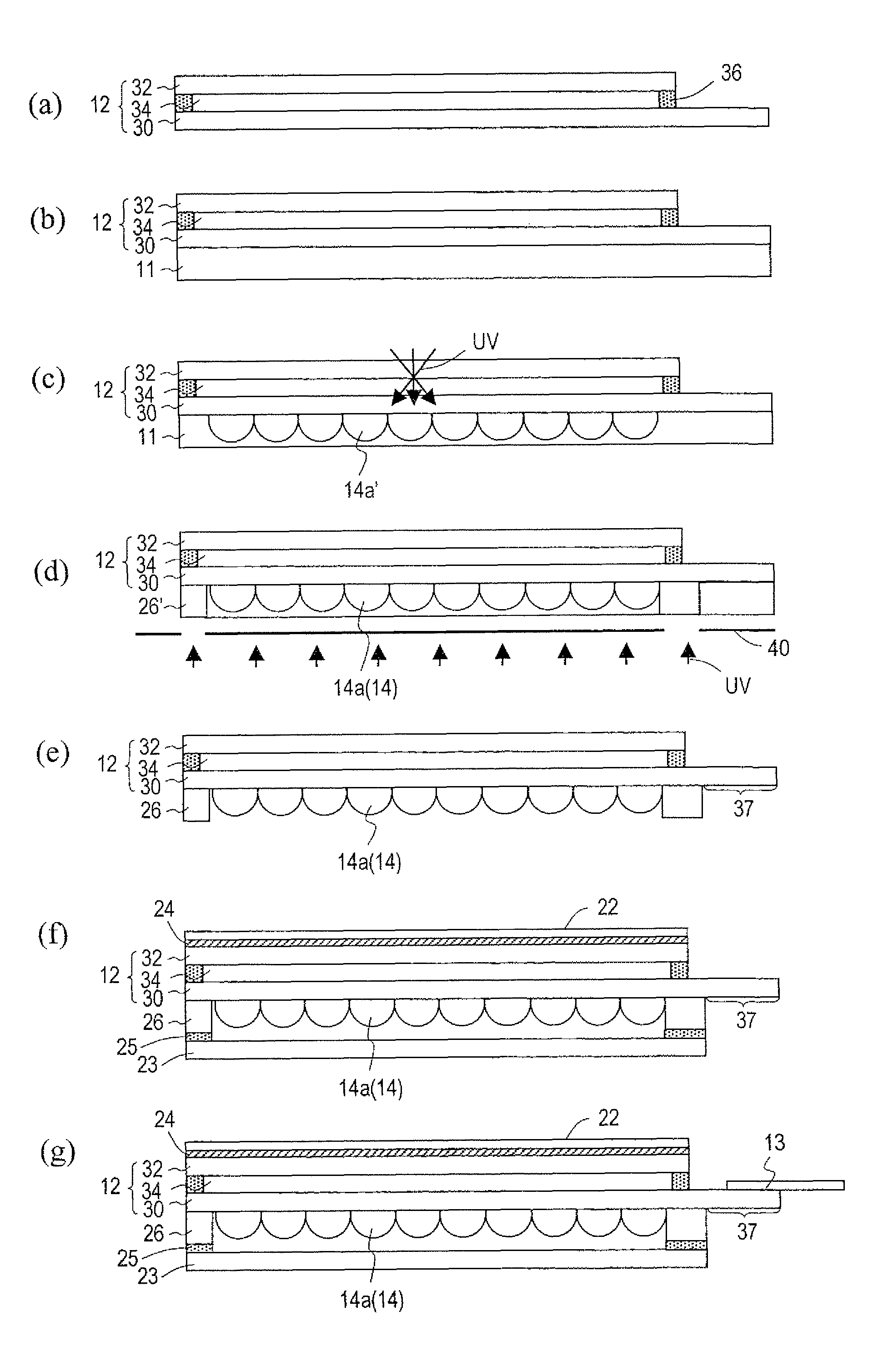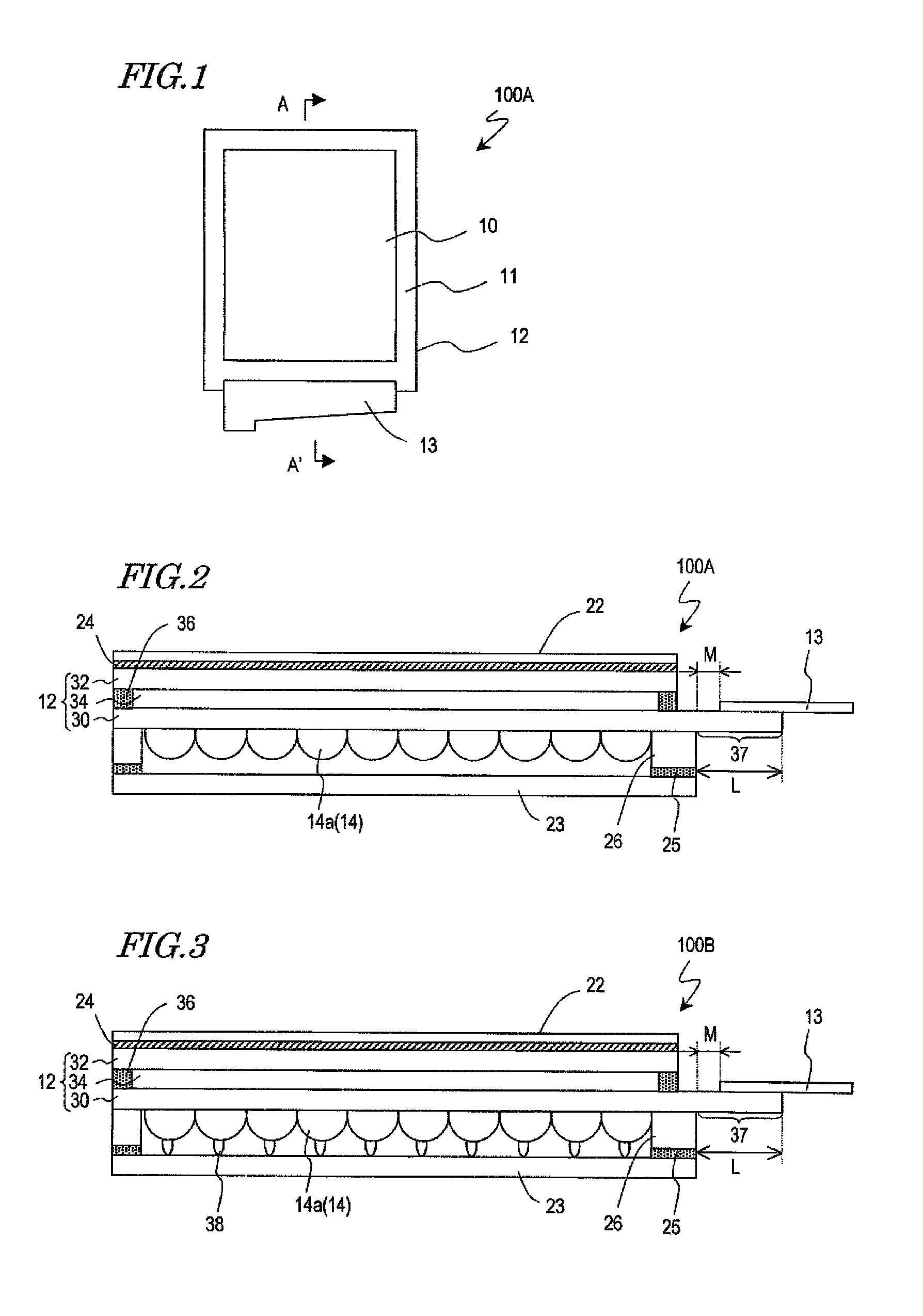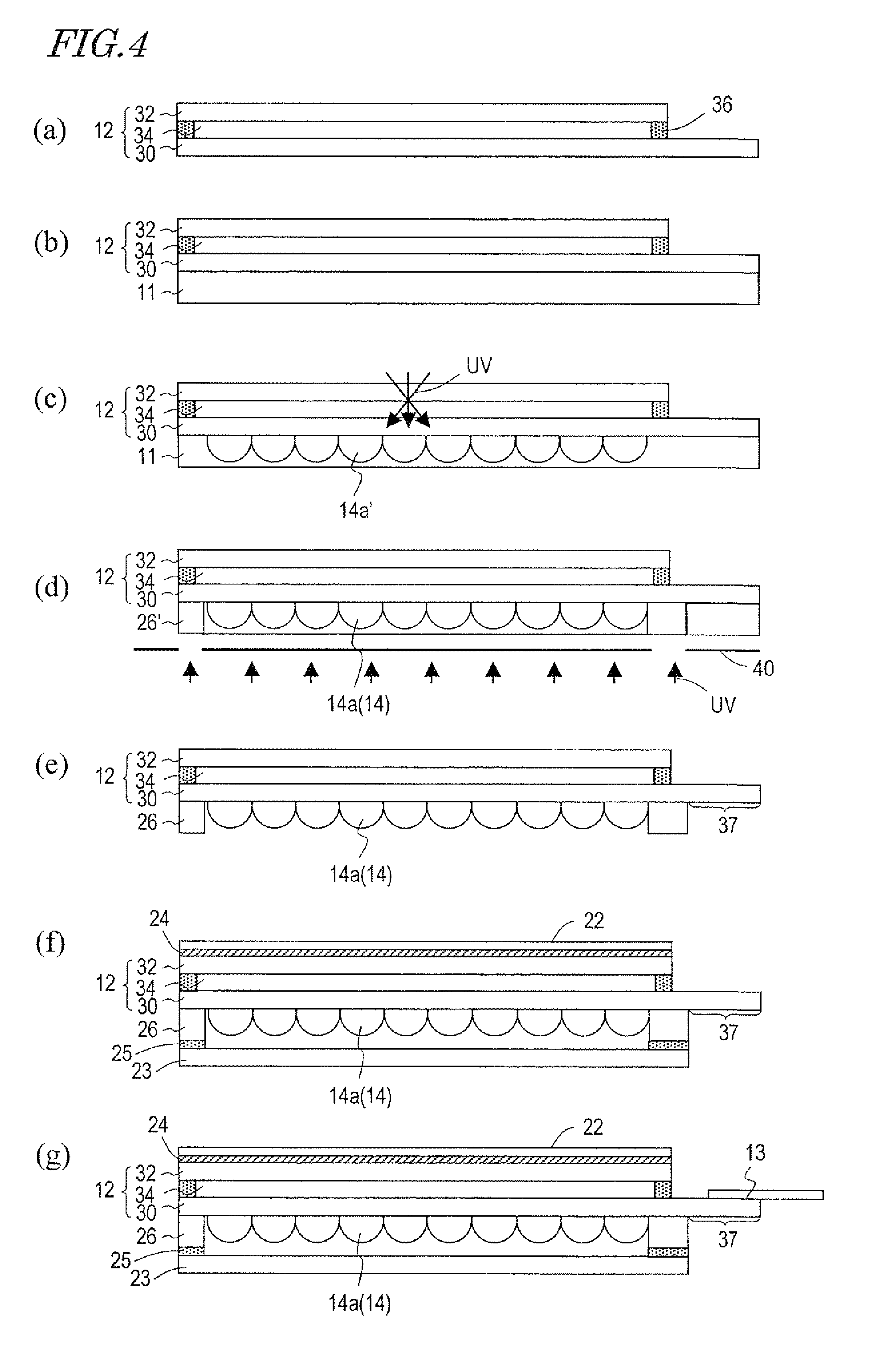Liquid crystal display panel with microlens array, its manufacturing method, and liquid crystal display device
a liquid crystal display panel and microlens array technology, applied in the field of liquid crystal display panel and liquid crystal display device, can solve the problems of reducing the contrast ratio, reducing the resistance of elements in an off state, and unable to obtain predetermined display states, so as to prevent material chipping and cracking, reduce production costs, and reduce production costs.
- Summary
- Abstract
- Description
- Claims
- Application Information
AI Technical Summary
Benefits of technology
Problems solved by technology
Method used
Image
Examples
Embodiment Construction
[0075]Hereinafter, with reference to the drawings, the structure of a liquid crystal display panel with a microlens array according to an embodiment of the present invention will be described.
[0076]FIG. 1 is a plan view schematically showing the liquid crystal display panel with a microlens array of the present embodiment. FIG. 2 is a cross-sectional view showing the construction of the liquid crystal display panel with a microlens array of the present embodiment along an A-A′ cross section in FIG. 1.
[0077]As shown in FIG. 1, the liquid crystal display panel 100A with a microlens array of the present embodiment includes: a liquid crystal display panel (also referred to as the “liquid crystal cell”) 12, which includes a displaying region 10 having a plurality of pixels in a matrix arrangement and a peripheral region 11 around it; and a flexible printed wiring board (also referred to as the flexible printed circuit (FPC)) 13, which is a wiring connection substrate. The flexible printe...
PUM
| Property | Measurement | Unit |
|---|---|---|
| distance | aaaaa | aaaaa |
| distance | aaaaa | aaaaa |
| distance | aaaaa | aaaaa |
Abstract
Description
Claims
Application Information
 Login to View More
Login to View More - R&D
- Intellectual Property
- Life Sciences
- Materials
- Tech Scout
- Unparalleled Data Quality
- Higher Quality Content
- 60% Fewer Hallucinations
Browse by: Latest US Patents, China's latest patents, Technical Efficacy Thesaurus, Application Domain, Technology Topic, Popular Technical Reports.
© 2025 PatSnap. All rights reserved.Legal|Privacy policy|Modern Slavery Act Transparency Statement|Sitemap|About US| Contact US: help@patsnap.com



